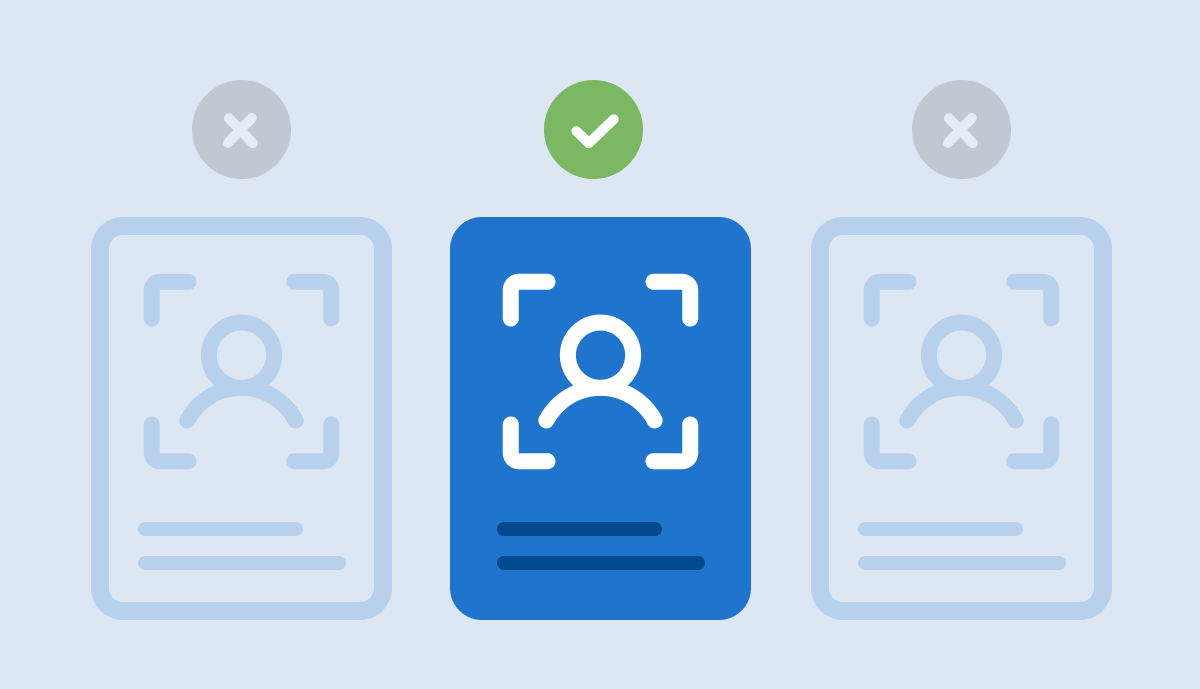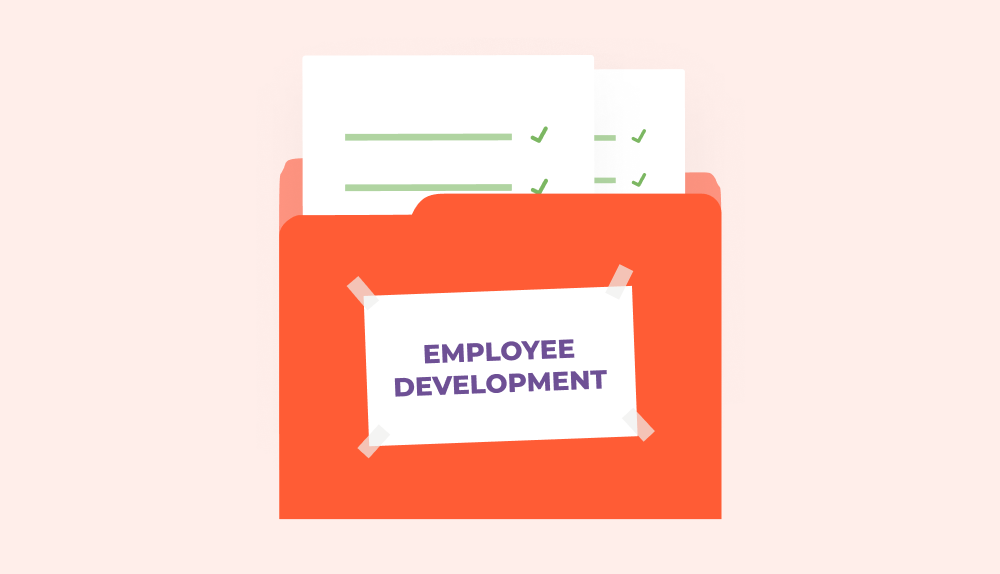Why go through all the trouble of hiring a new specialist when you have an employee who would be happy to expand their skills and is already onboarded? Investing in employee development is one of the best ways to address everyone’s biggest nightmare in professional industries: skills shortages.
Providing employee development opportunities also helps you keep the experts you already have (and boost their motivation) and attract new hires looking for a workplace that cares about skill expansion.
This article will show you that investing in the skillsets of your people brings ROI on many different levels and helps your business become more competitive.
Employee Development Definition
Employee development is the process of helping employees progress in their careers by acquiring new skills. Its goal is to improve the existing competencies of your employees and help them develop new ones, all to support your business goals.
Employee development is an investment and requires time, effort, and money — but it pays off in the long run.
Think about it this way:
Whether you choose to fire an employee with limited skills or develop those skills to your standards, it will cost you money.
But if you choose the latter, you gain long-term employee retention and improved skills and knowledge. Employee development and subsequent career development also help you avoid the time-consuming and costly process of sourcing, recruiting, and onboarding new hires so they perform to your standards.
In other words, training and development opportunities offer a win-win scenario for your employees and your business. If you build a well-organized employee development program on top of your strategic needs, you will end up with a workforce that is perfectly aligned with your standards.
The Importance of Employee Training and Development
Employee development is often overlooked in business, with management spending more time on other areas such as finance, marketing, operations, and even hiring. However, employers need to realize that investing time and money in employee training will help them retain staff and convince employees to grow and improve their career development within the company.
According to a report by LinkedIn, 94% of employees would stay at a company longer if it invested in their career development.
So, what other positive outcomes can you expect after implementing an employee training program?
Benefits of Providing Development Opportunities to Your Employees
You should consider an employee development plan at every level. If executed well, the plan can provide many beneficial outcomes to your employees, management, leadership, and the whole company. This includes many other advantages, such as:
Cost Savings
Let’s start with the most powerful consequence of a good employee development program. It saves you money on many fronts: you avoid replacing employees by retaining more people (which translates into cost savings) and enjoy a more motivated workforce with the exact expertise you need to deliver for your clients.
Greater Competitive Advantage
Sure, you want to run a profitable business. But you can’t do that without your employees, and there’s a lot of competition for top talent in all professional services companies.
So, think about it this way:
You’re not only competing for market share. You’re also competing for top employees — and a robust employee development program can convince them to choose you over other employers.
All professionals want to be in a workplace where leadership will encourage them to upgrade their skills. Attractive employee development programs can become your best asset when recruiting new talent, building a stronger competitive advantage for your business.
Lower Staff Turnover
An employee development plan boosts employee retention, not only because you’re not firing workers who lack certain skills (and choosing to enrich their skill sets instead through training programs), but also because employees are going to want to stay with you longer.
Increased Employee Engagement
A more engaged and motivated workforce will be more productive. It’s simple. Employees feel more appreciated when you invest in their career development and training programs. Workers who get a lot of learning opportunities in the workplace are more likely to feel more engaged and happier at their jobs. As a result, such actions encourage employees to stay with the company longer.
Most professionals, regardless of their field, value growth and skill expansion above all else. As soon as they feel like they’re not moving forward, they will start to look around for other opportunities.
Stronger Company Culture
Employee development programs increase retention, allowing you to build a strong company culture, instead of having to build it from scratch whenever a batch of new employees joins your business.
According to Building a Culture of Learning, The Foundation of a Successful Organization, businesses with a culture of learning and knowledge sharing are more competitive, and their workforces are more engaged.
7 Proven Methods of Employee Development
There are plenty of options for professional development that don’t require you to spend much of your time and money. Below are seven proven methods you can include in your employee development plans if your company is serious about improving your employees’ skill sets.
1. Mentoring
Mentoring is one of the most popular activities included in an employee development plan. The idea is that you match less experienced team members with those who have more years of experience.
Rather than just sitting in a course, this allows for practical, hands-on learning.
Mentoring can happen informally (via your culture) or through formal programs. A successful mentoring program:
- Brings together workers based on their skills and career development needs.
- Has a clear goal that can be tracked.
- Establishes a minimum time commitment from both sides.
- Holds both parties accountable for the outcome.
- Aligns mentoring with the broader talent management and business strategies.
2. Coaching
Coaching is a little more involved than mentoring. With coaching, you bring in a more experienced specialist to provide an employee with advice and guidance to help them gain new skills and improve their performance.
As you can tell, coaching needs to be fully personalized and customized to match specific career development and business objectives. Coaching sessions are usually based on one-on-one meetings over a period of time.
For coaching to work, it requires commitment from both your business and the person who is being coached. You also need a plan to obtain results and a follow-up evaluation to make the most of coaching.
3. Individual Development Plans
This is an excellent method to speed up the learning process. An individual development plan (IDP) is a document that details an employee’s intentions and learning outcomes, and the support required to meet their growth goals.
The best IDPs are based on research into adult learning strategies, experiential learning, and other methods.
4. Cross-Training
Cross-training means training employees to carry out tasks other than those normally assigned to their role. Cross-training can take on many forms — it can be a short-term arrangement or ad hoc fix, or you can make it an ongoing and fully planned process.
However, don’t expect immediate skill development among employees engaged in cross-training. Treat it as an experiment to determine whether the employee is interested in learning new skills.
To begin cross-training, first identify the knowledge and skills required for a given position and consider the employee’s current skills. This is how you can spot gaps in their skillset that you can fill through cross-training.
5. The 9-Box Grid
This handy employee assessment tool helps evaluate a worker’s current and potential levels of contribution to your business.
The grid is often used in succession planning to identify potential leaders. But it’s a great tool for visualizing assessment data to help managers see their employees’ actual and potential performance. You can also use insights from the grid to design IDPs.
6. Job Shadowing
Job shadowing has one employee follow a colleague around daily to learn what their job looks like.
But here’s the coolest part of job shadowing: it allows the employee to see your business from another perspective. By seeing the challenges people face in different departments, they can better understand their daily struggles.
This perspective is invaluable if the employee wants to transition into a different department. For example, it can prepare a senior developer for a team leader role.
7. Job Enrichment
Job enrichment expands the employee’s role by adding more tasks and responsibilities. Businesses use this tactic to redesign jobs and increase employee motivation.
Common Challenges in Employee Development Plans and How to Overcome Them
What’s not to like about an employee development plan? Well, just like any other initiative, employee development comes with several potential downfalls that you should know about, including:
Lack of accountability. Does your business hold managers accountable for developing people who report to them? Are they tracking the utilization rate of your employees? This is a problem for many companies.
Lacking talent development capabilities. Not many companies have the managerial capability or offer feedback to allow people to grow in their jobs. Do you have this capability?
No alignment between workers and business strategy. Is your workforce aligned with your business strategy? If not, realizing this through employee development programs will be more challenging.
Inconsistent execution. You probably have some core processes already in place (like workforce planning), but are you executing these programs consistently?
Lack of analytics tools. Just like in any other project, you need to track all the metrics that matter. How else can you tell whether your programs are worth the spend?
Development needs of each employee. Not every employee at your company will plan their development similarly. Every employee development plan needs to take into account individual needs and the future aspirations of your employees.





